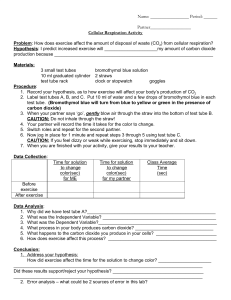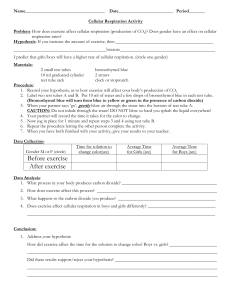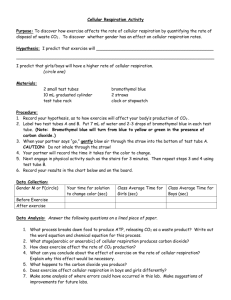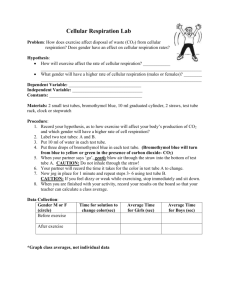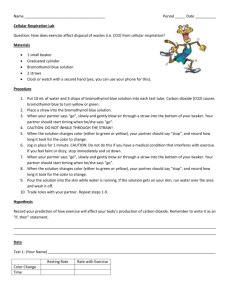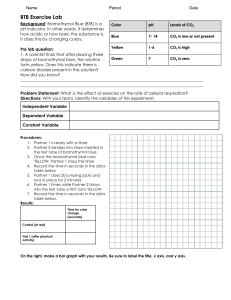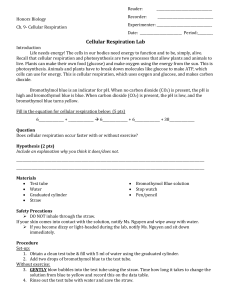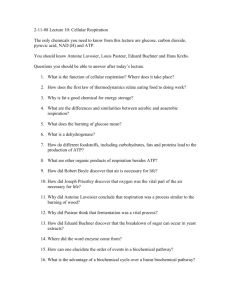Cellular Respiration Activity
advertisement
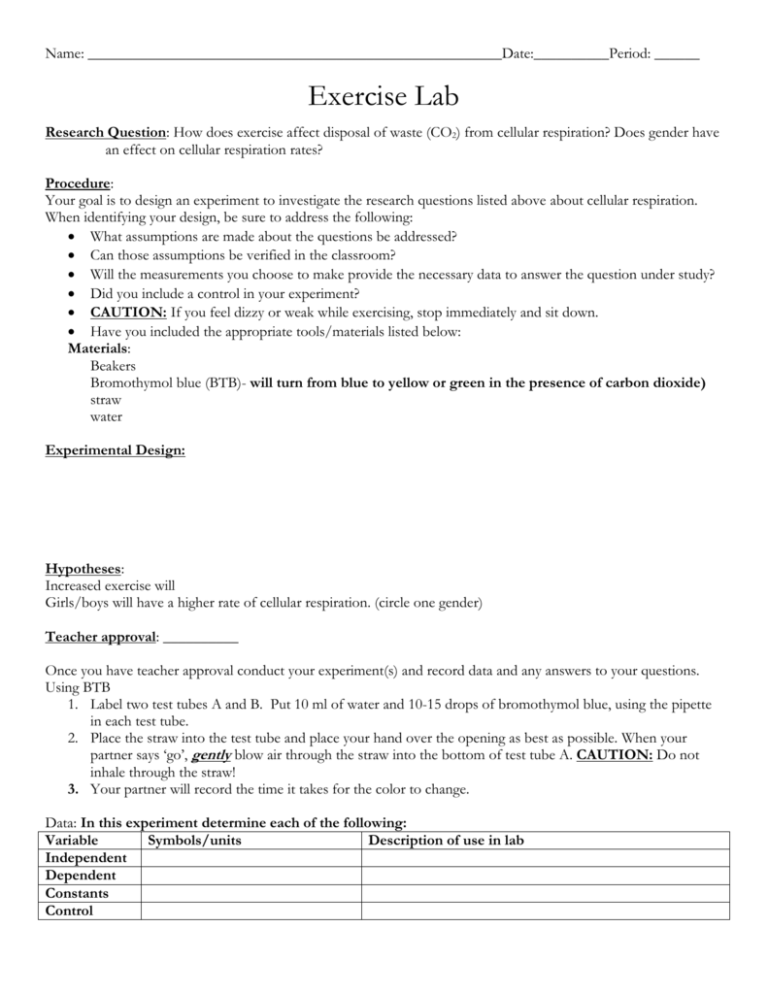
Name: _______________________________________________________Date:__________Period: ______ Exercise Lab Research Question: How does exercise affect disposal of waste (CO2) from cellular respiration? Does gender have an effect on cellular respiration rates? Procedure: Your goal is to design an experiment to investigate the research questions listed above about cellular respiration. When identifying your design, be sure to address the following: What assumptions are made about the questions be addressed? Can those assumptions be verified in the classroom? Will the measurements you choose to make provide the necessary data to answer the question under study? Did you include a control in your experiment? CAUTION: If you feel dizzy or weak while exercising, stop immediately and sit down. Have you included the appropriate tools/materials listed below: Materials: Beakers Bromothymol blue (BTB)- will turn from blue to yellow or green in the presence of carbon dioxide) straw water Experimental Design: Hypotheses: Increased exercise will Girls/boys will have a higher rate of cellular respiration. (circle one gender) Teacher approval: __________ Once you have teacher approval conduct your experiment(s) and record data and any answers to your questions. Using BTB 1. Label two test tubes A and B. Put 10 ml of water and 10-15 drops of bromothymol blue, using the pipette in each test tube. 2. Place the straw into the test tube and place your hand over the opening as best as possible. When your partner says ‘go’, gently blow air through the straw into the bottom of test tube A. CAUTION: Do not inhale through the straw! 3. Your partner will record the time it takes for the color to change. Data: In this experiment determine each of the following: Variable Symbols/units Description of use in lab Independent Dependent Constants Control Data Collection: Gender M or F (circle) Before exercise Class Average Time for solution to change color(sec) Average Time for Girls (sec) Average Time for Boys (sec) After exercise Analysis Questions: 1) What process in your body (specifically) produces carbon dioxide? 2) How does exercise affect this process? 3) What are the reactants and the products? 4) What is the indicator used in this lab 5) How do eukaryotic and prokaryotic cells obtain energy? 6) In certain cases, regular exercise causes an increase in the number of mitochondria in muscle cells. How might that improve and individual’s ability to perform athletic activities? Word Bank 2 ATP 32 ATP 2 ATP NADH FADH2 Electron Transport Chain Mitochondria Cytoplasm Fermentation Glycolysis Glucose Pyruvate Lactic Acid Krebs’s Cycle
